
There are all sorts of things that can happen to an engine during assembly and shipping. You should always check a new-to-you engine inside and out. With a used engine, you need to verify it is clean and doesn't have problems from age or abuse. Too often today we must double check the assembly quality.
Part 1 July 2023
I recently purchased a Williams 4-6-0. New in the box. Original tape on the Williams shipper box. It had never been out of the box since it left the factory about 11 years ago.
First I checked the tender. Opened it up and one of the 2 boards was flopping around inside. The board had a holder. For whatever reason it wasn't snapped in. I put it in the holder and it snapped right in and the board was held tight. A short and fried board averted.
Next the engine. Often only a little dab will do you amount of grease is used on the main gears. After 11 years, it may have dried up. So off comes the boiler to make sure there is enough, viable grease on the gears.
First thing I found was the can motor was a little floppy in the mount. The mounts seemed tight, but it was not correct, the motor could spin in the mounts.
Next some wires had been routed to keep them from hanging out and rubbing on the wheels. Problem was they were not pulled in tight enough and would still rub on the wheels.
Took off the gear cover and found a double reduction gear. One of the gear cover bolts was loose to begin with. Good gears, only a tiny dab of any grease on the top gears. The bottom gears were dry. I added good grade grease to both. Bronze gears still need grease.
Took the can motor out to check it out and to access the area where I needed to zip tie the wire bundle a little better. Got the wires fixed. Then I carefully put the can motor in the mounts, snug then tighten sequence and now the motor is mounted well. No flopping around now, which helps gear alignment.
Spun the motor to get the wheels to turn complete revolutions 3-4 times. Found an area where the linkage was binding. De burring and then oil fixed that.
Oiled the axle bearings the instructions showed to oil. One drop goes a long way. Also DID NOT oil the pickup rollers.
Put the shell back on the motor and tested. The draw bar kept letting go of the tender. Some minor bend adjustments to the draw bar and that was fixed.
After about 20 minutes of break in running the engine started popping, then stopped. Found one of the rear drive wheels was loose and the linkage was getting out of synchronization. The wheel was a slip fit. Aluminum foil used as a shim on the axle and vibra-tite shaft lock together to lock it back on. Running again.
The engine runs smooth, no gear or motor noise, horn and whistle work well. It pulls well also. Many reviews stated it is a good engine and I see that the design is. It would have been a different story if I had just put it on the track and run it. Shorted boards, wires and gears missing lube along with motor misalignment can cause problems in a hurry. The pre-run check is often the difference between a good long lived engine and one with problems.
I expect this engine will run happily for many years.
Part 2 Feb 2024
I purchased a Williams Crown Edition Dreyfus. It is highly detailed and what I wanted. It had not been run and there were no signs of anyone having done anything but take it out of the box for display. The warning was it came with a package of spare bolts from the factory.

After initial lubrication and checking the grease in the gear box, I tested it. It jerked stopped and started. I determined that the ground connections were bad. I checked, sure enough the rear and front trucks on the engine had paint on critical grounding areas. The front and rear drivers have traction tires so no grounding there. The center drivers did not contact well initially.
I used an ohmmeter to test and sure enough, there was no ground connection in most places there should have been. I had to clean contact areas on the rear and front trucks. The brass is now showing through and getting good contact.
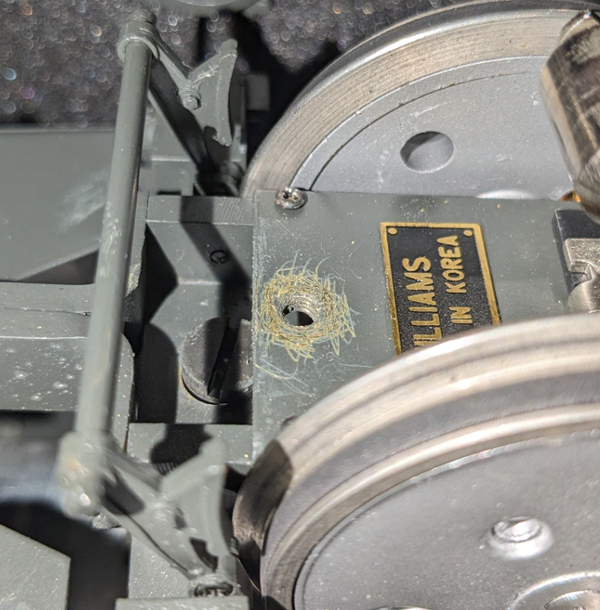
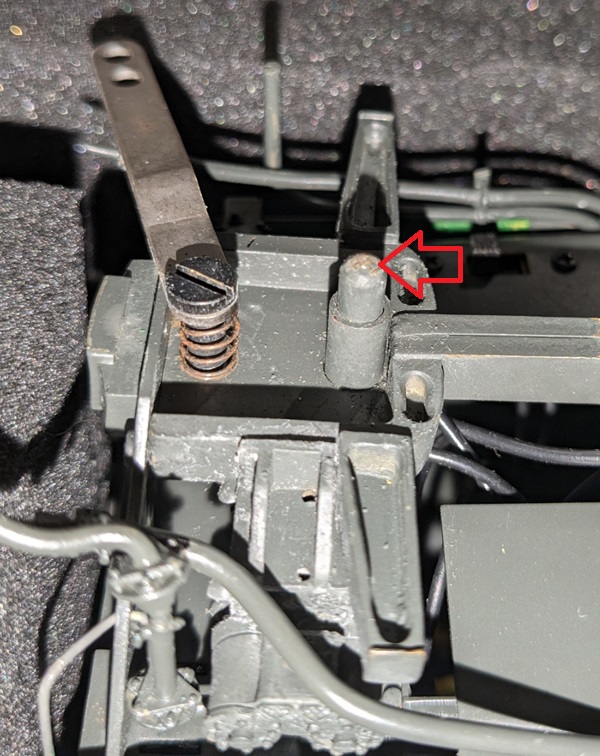
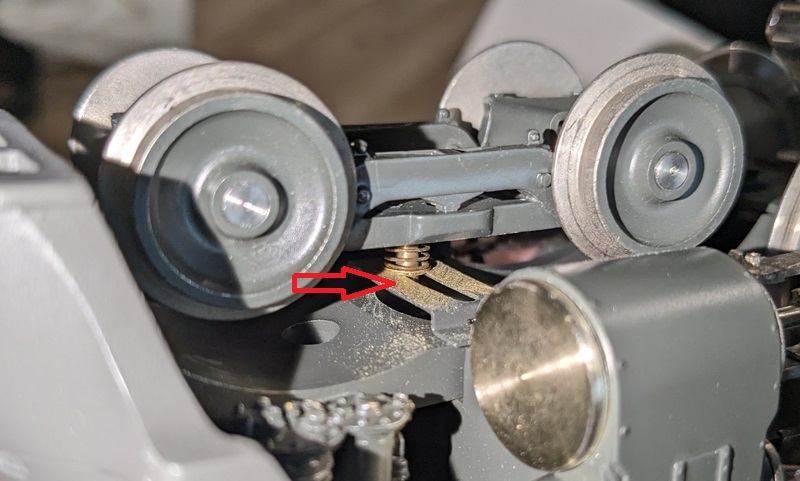
Oh, on the rear truck, the detail with the arrows was bent down and could touch the center rail. I took it off, bent the tabs so it fit correctly and put it back on the rear truck. Now it fits as intended.
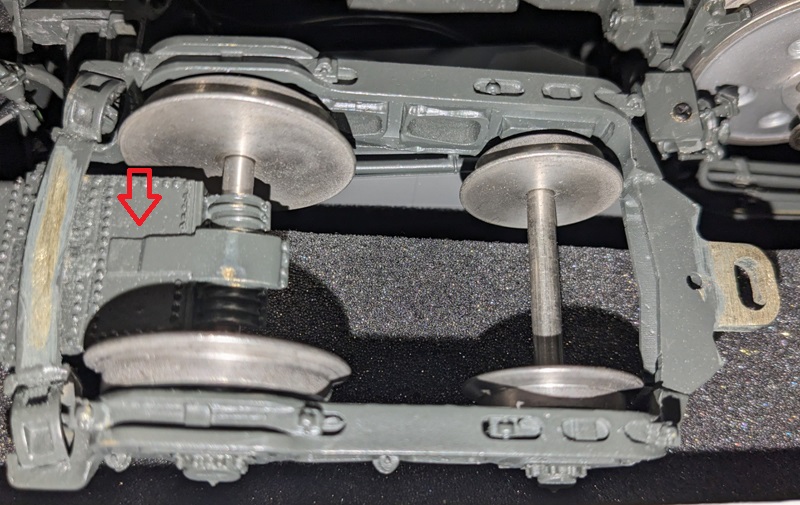
For extra assurance I found a light spring to put between the frame and the rear truck. Yes, it is a pain to get it in place before putting the bolt in. It does assure a good contact. Maybe overdoing it, but that may be needed.
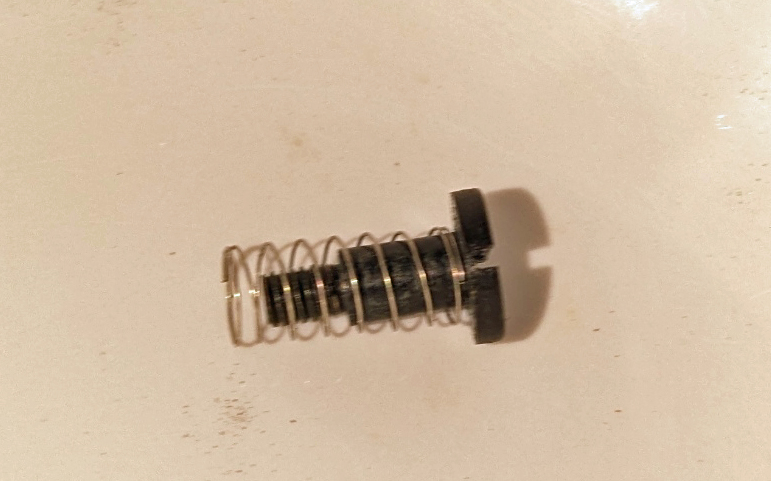
Already to go now, it runs great!, but no reversing! Sound is working OK. I run it about 2 laps, one of the linkages comes off. Good thing there are spare bolts, I doubt I will ever find the original. Some of the linkage pieces are soft metal and bend VERY easily. Be careful handling the engine. In checking the linkage a spring falls out and I notice the motor is flopping around. I take the frame off the boiler. Remove the front truck to get access to the front bolt and 2 small bolts in back that hold on the boiler. Get out the thread locker to make sure bolts don't come loose again.
Many of the bolts are tiny in my big hands. Good thing I had screwdrivers that would magnetically hold most of them.
What I found was the rear motor mount bolt had come out, the three smaller bolts holding the motor mount to the frame were loose. The flopping of the motor may have shorted a terminal messing up the reversing unit. Wires were not managed and rubbing on the flywheel. All the wires were black making tracing hot, ground and motor DC wires more interesting.
This is the motor re-mounted and the wires managed. You can still see the blue thread locker on the bolt. It runs all over if not careful.
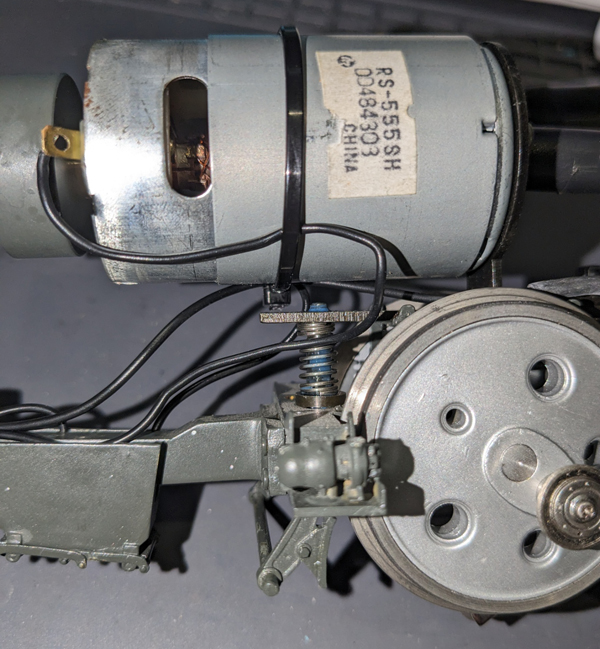
Motor is good, with slight signs of box-rash. Rust from being in a bag without desiccant.
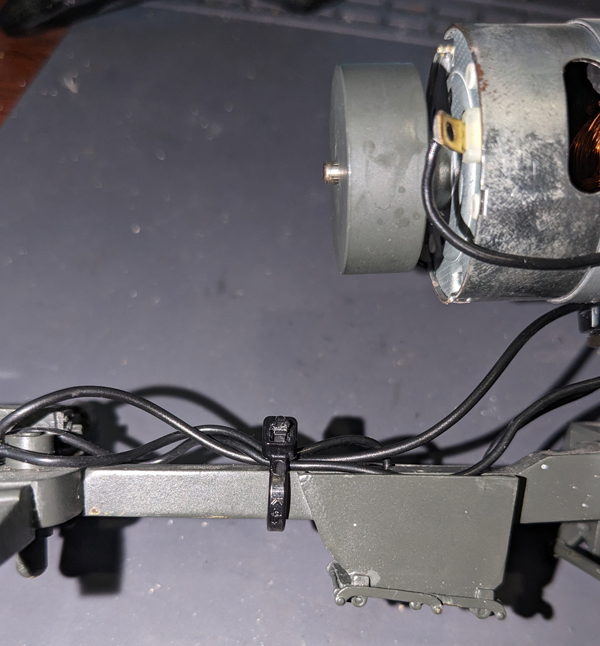
I found that one of the inserts in the steam chest was loose and I added some super glue to lock it in. along with thread locker added to the more suspect bolts in the linkage.
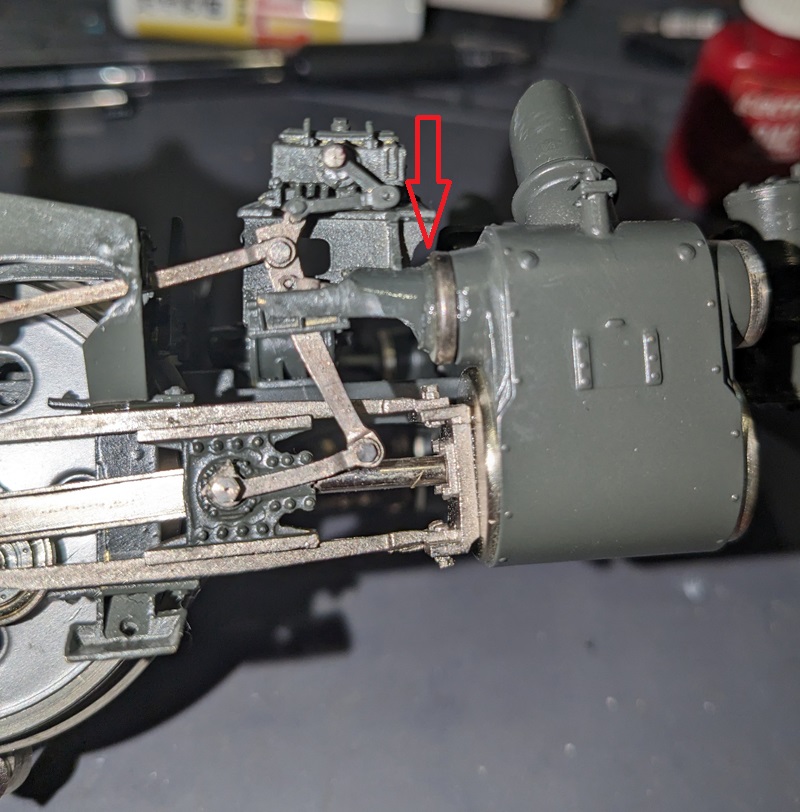
I hooked up my HO transformer to the motor and ran it in. It first made some pops at high rpm so I ran it slow for 10 minutes, then medium for 10-15 more and the a little at full speed.
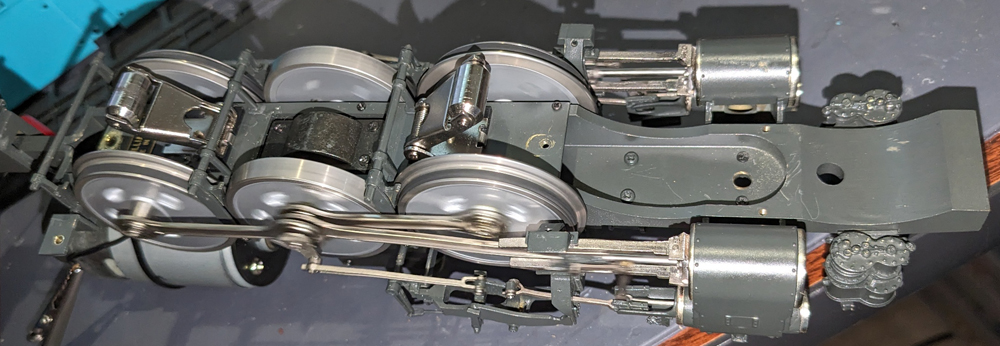
After about 30-40 minutes of running it sounds smooth and nothing else fell off. Ready for the track.
The wire supplying power to the boiler smoke unit and lights was soldered connection. I added a plug in connector. That should make any future maintenance much easier.
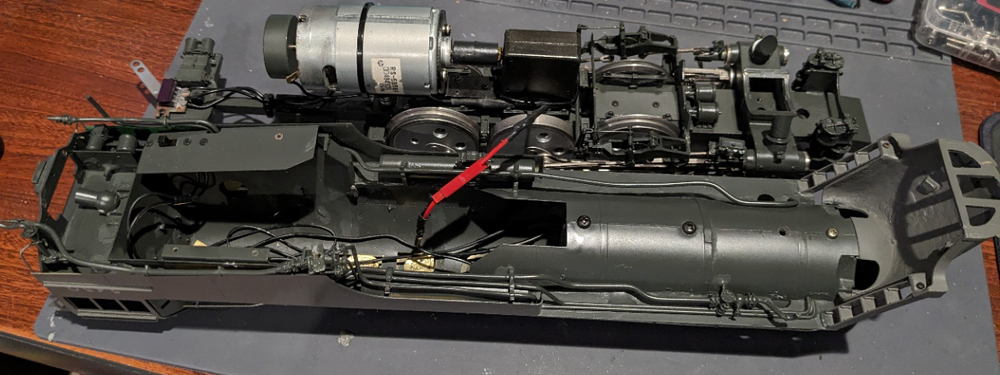
The last adjustments After running for a while I noticed there would be a pop at times in the turns with a noticeable stutter of the engine. It was part of the linkage snagging on the linkage bolt on the wheel.
Step 1, I adjusted the linkage shown below on both sides to bend out slightly so it would no longer rub on the bolt heads. Depending on the engine this may not be needed.
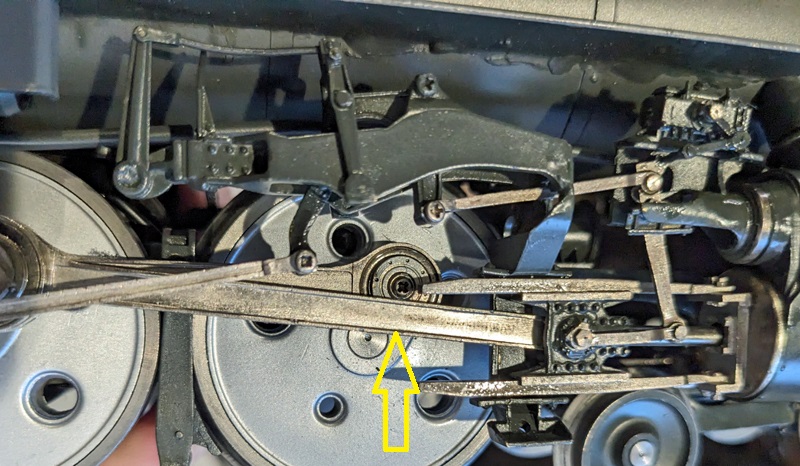
Step 2, the primary problem was a bolt in the crosshead. Red arrow below. The end of the bolt extended beyond the back of the drive rod linkage and was catching on the crosshead guide support. A minute or two with a small file and the part of the bolt that was sticking thru was smoothed down. No more catching. This was only needed on one side.
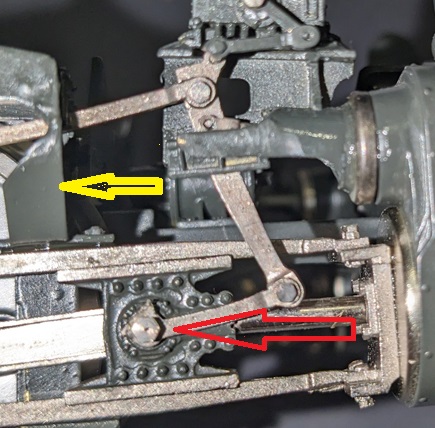
The Tender
In checking the tender I found the draw bar pin was very loose now. I was able to tighten it without needing a screwdriver on the other end. You can't get to the other end easily.
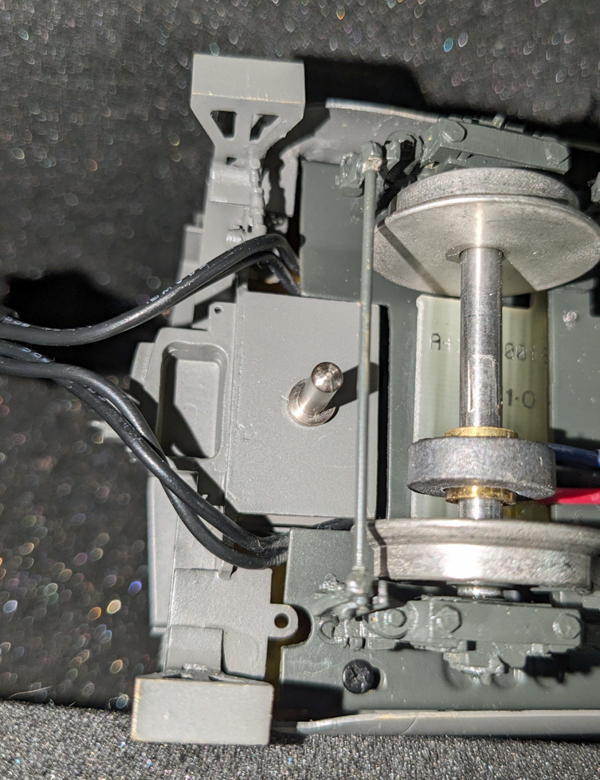
Wiring connections all look good. I don't see a ground pickup to the electronics boards from the tender. It appears it relies on the ground from the engine thru the tether only. The rear coupler did not move side to side well and would most likely derail a car in the turn. There were burs on the centering mechanism and it was stiff. Some filing, a little grease and working the mechanism now it can move to the side with little force. Should not derail now. This is a picture when the rear truck is detached and turned around.
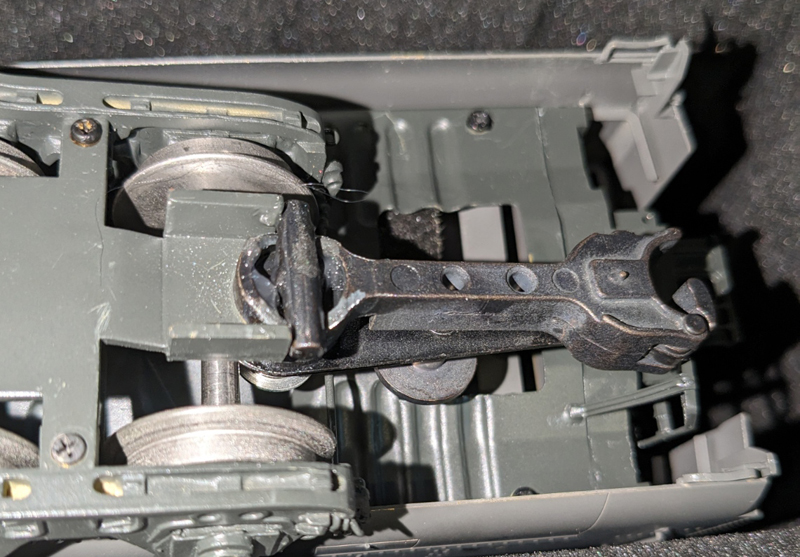
Funny thing, I found that measures had been made for making a good ground on the tender trucks. The paint had been removed where it contacts the frame. Too bad they didn't wire a ground to the boards from the tender frame.
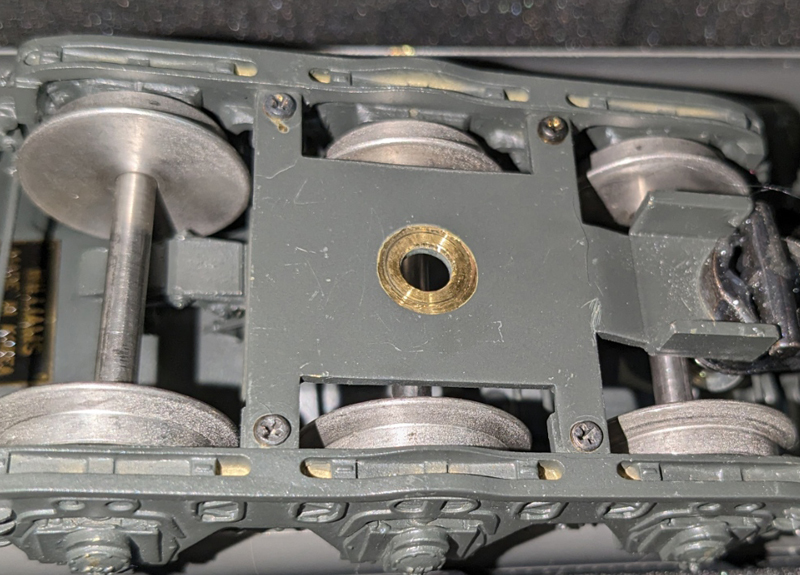
It is running now, forward only. The motor probably shorted when it was bouncing around. Time to replace the reverse board with a 7 amp Dallee Reversing board. This is the old board installed in the tender, all the harness wires are black. Very carefully trace and wire in the new reversing board. The red and black wires on the left are the power feed to the sound board.
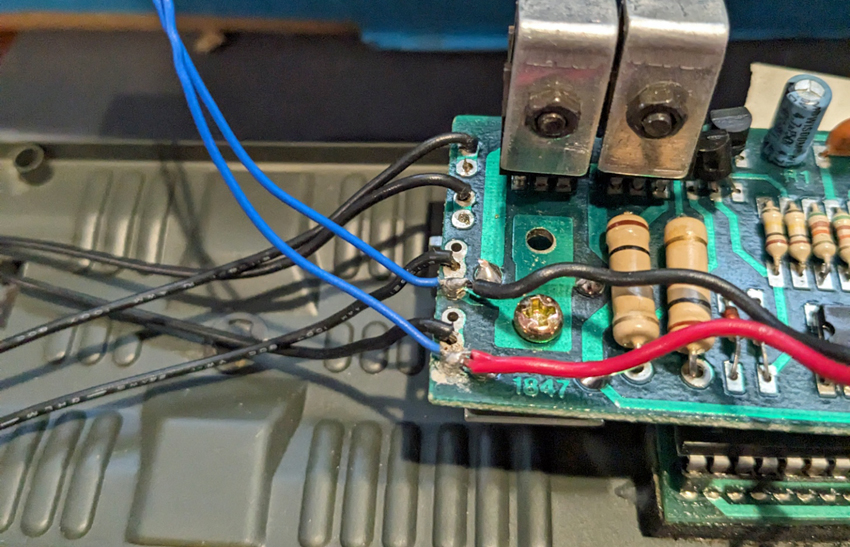
The new reversing board has a micro switch for disabling the reversing function. I designed and printed a switch mount for the switch to fit in the water filler neck. This is the switch mount .stl file.
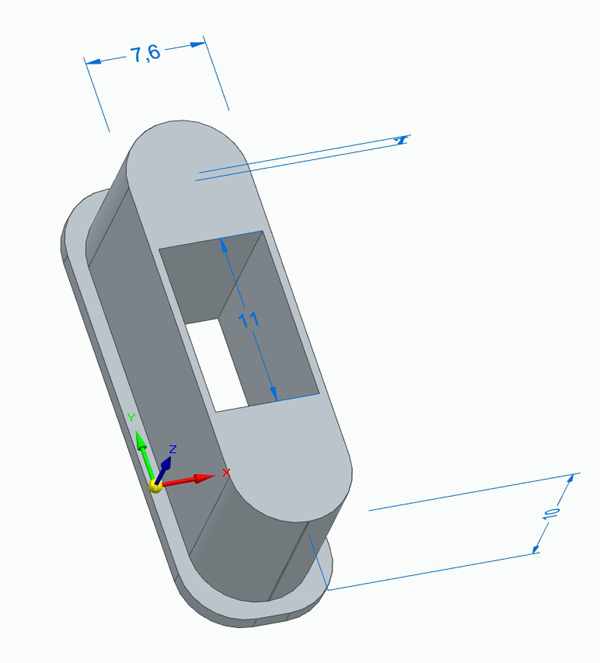
Put the switch in the mount and then install the mount from inside the tender. A small amount of super glue holds the switch and mount in.
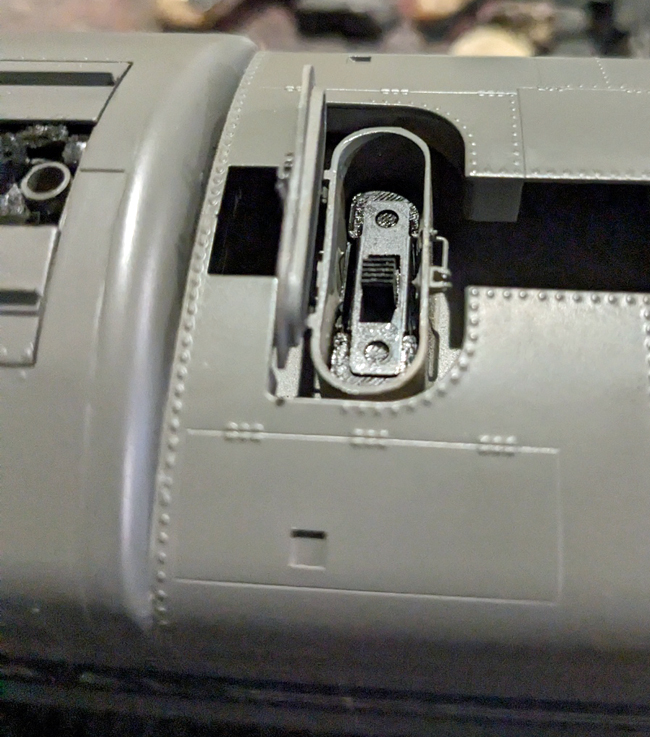
It now runs as designed. The Williams True Sounds chuffer, whistle and bell are usable for now, but a little dated.
Back to Main page.
Last update Feb 25, 2024